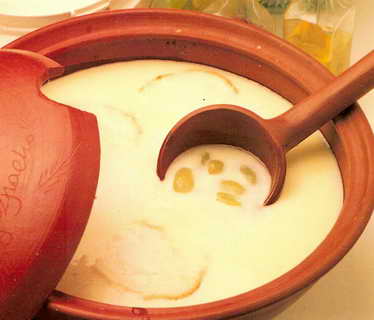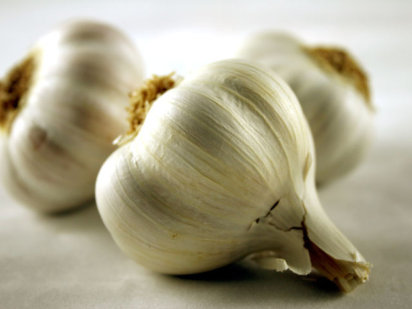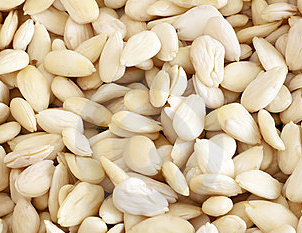
Origin: Andalusia

Ajo blanco (white garlic) is one of the most popular variations of gazpacho and like its cousin, it comes from Andalusia, mainly Granada and Malaga, though it's also prepared in Extremadura and Huelva.
Its one of the many dishes Spain inherited from the Moors before the unification of the country, as its base ingredients is the almond. However we know that Romans ate a similar preparation that consisted of one part water, one part vinegar and bread crumbs, seasoned with different herbs and spices.
Andalusia was and still is mainly an agricultural region and peasants worked under the harsh Andalusian sun. This is why the rich culture of cold soups developed in the area, they had to keep you from dehydrating and to be nutritious at the same time to resist the long hours working in the country
Ajo blanco is perhaps the closest variation of how it was prepared before tomatoes were brought to Spain, after America was discovered.
In Spain there are festivities dedicated to ajo blanco. In Malaga the celebration party takes place on September 2, with ajo blanco tastings. Likewise, in Herrera del Duque (Badajoz, Extremadura) there is an ajo blanco contest on August 15. In fact in the town of Herrera del Duque, they also have their own separate version of the dish that uses breadcrumbs to give the soup more sustenance. This dish is normally eaten during the colder months as it provides people with more calories to sustain them throughout the winter.
In certain parts of the countryside surrounding the Spanish city of Granada, ajo blanco soup is normally eaten with a good 'papa asá' which is a roast potato. Meanwhile in Malaga, it is often accompanied by a selection of fruit such as moscatel grapes and pieces of apple of melon. Fruit and this cold soup go suprisingly well and together are extremely refreshing. Great for those hot Spanish summer days. In fact, ajo blanco is a Spanish soup that pretty much goes with anything. It is not uncommon to find it served with Spanish tortilla, figs, grapes and other ingredients. This means that no matter what kind of menu you are planning, you can always count on ajo blanco to fit in there.
Today, ajo blanco is seeing a revival of some sorts in the more upmarket restaurants in Spain. The distinctive soup is now becoming an important piece in certain areas of creative cuisine, and is often used to decorate other dishes as well.
Ajo blanco is mainly consumed in the summer months, as it's served cold and it's very refreshing. It has a creamy texture very soft on the palate, but some people like it more liquefied so that it can be drunk from a glass, so when you prepare it, do so to your taste.
Ajo blanco is very easy to make and uses inexpensive and common ingredients. It's also a very healthy choice as it has a high nutritious value derived from garlic and almonds. There isn't really a rule to make ajo blanco, each cook prepares it to his or her liking, but there is a general guideline that you can follow.
Ingredients:


Preparation:
Should you ever go to Malaga, be sure to sample the best of Ajo Blanco. You could even see if you could go with your new friends from your Spanish class and try it a local restaurant. Or if you are feeling really brave, you could try cooking it for them instead.